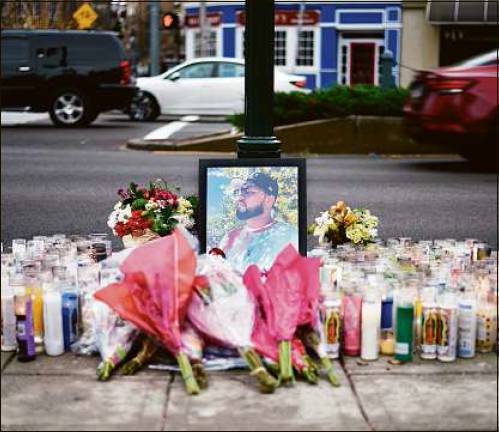PEOPLE FRIENDLY STAMFORD
Stamford’s Boulevard of Death
No one should die trying to cross the street on their way home from work, but that is sadly what happened to Giovanni Vega Benis and Yuliana Arias Lozano early in the morning on Dec. 3 when a driver hit them with a car on Washington Boulevard and killed them. Their deaths are tragic and an outrage. We mourn their loss and send our deepest condolences to their families and loved ones.
Deaths like this can often be the result of reckless individual decisions — in this case by the driver who made reckless and reprehensible choices that resulted in the loss of two innocent lives. Even though we don’t yet know all the details about the driver’s state that night, the victims’ loved ones are right to demand justice, especially given that reckless drivers regularly kill innocent people with relative impunity.
But these deaths are also the result of another kind of indifference to life that is more systemic and insidious: bad road design that prioritizes traffic flow and high speeds over human life.
Traffic engineers know that road design directly impacts driver behavior and safety. The stretch of Washington Boulevard where Giovanni Vega Benis and Yuliana Arias Lozano were tragically killed is a 25 mph zone, but anyone who has driven through there knows that cars routinely go well above that. That’s because the road there is essentially designed as a highway right through the middle of Stamford’s downtown. The intersection of Washington at Main Street is six lanes wide — wider than the Merritt Parkway — and even has a highway-style cement median separating traffic.
Washington Boulevard is Stamford’s Boulevard of Death. This year alone, three people have been killed and five people seriously injured on Washington Boulevard in Stamford’s downtown area. On April 13 of this year, Stamford resident Ronald Molina was sadly killed by a hit-and-run driver at Washington and Tresser boulevards. That intersection was also where Nancy Flores was tragically killed by a driver while walking home from work at Target in 2019.
It’s impossible to know for sure, but safer road design may have prevented these two recent tragic deaths at that intersection, and others like it. For starters, we know shorter crossing distances are safer for people trying to cross. Fewer car lanes and a pedestrian refuge island between the northbound and southbound lanes would be a good start. So would changes that force drivers to actually slow down, like a raised intersection. It’s cliché but true: speed kills. According to the U.S. Department of Transportation, a pedestrian struck by a car going 20 mph has a 5 percent chance of dying. At 30 mph, the chance of dying goes up to 40 percent, and at 50 mph there is a nearly 100 percent chance of death.
At the local level, Mayor Caroline Simmons deserves credit for committing Stamford to Vision Zero, which is a pledge to eliminate all roadway deaths and serious crashes in Stamford by 2032. The focus of Vision Zero is what is called the “safe system approach,” which works by building and reinforcing multiple layers of protection to both prevent crashes from happening in the first place and minimize the harm caused to those involved when crashes do occur. This means better and safer road design.
Unfortunately, local action alone can’t fix all of Stamford’s dangerous roads. That’s because Washington Boulevard — and many other collision hotspots around the city — are state roads controlled by the Connecticut Department of Transportation (CTDOT). For too long, CTDOT has prioritized traffic capacity and high speeds over safety. For example, the city’s transportation department recently asked CTDOT for permission to install a raised crosswalk at Washington and Richmond Hill Avenue to slow down speeding vehicles, but the state declined. Predictably (and tragically) a woman was hit and run over by the driver of a pickup truck while trying to cross at that same intersection earlier this year. Indeed, it is no coincidence that of the five pedestrian deaths that have occurred in Stamford this year, all five have occurred on state roads controlled by CTDOT.
Every death on our roads is one too many. How many more innocent people must die or be seriously injured before our leaders — especially at the state level — wake up to the reality that human life is more important than how many cars can move through a road over a given period of time? When will these officials stop catering to the vocal minority of people who subscribe to the inhumane idea that driver convenience is more important than preventing deaths? The city and state must fix Stamford’s Boulevard of Death and help put an end to these preventable tragedies.
Will Wright, Chris Dawson, Jordan Force, Dice Oh, Angelo Bochanis and Zach Oberholtzer are members of People Friendly Stamford, which is a local advocacy group dedicated to making Stamford’s streets safer for all users, including pedestrians and cyclists.
